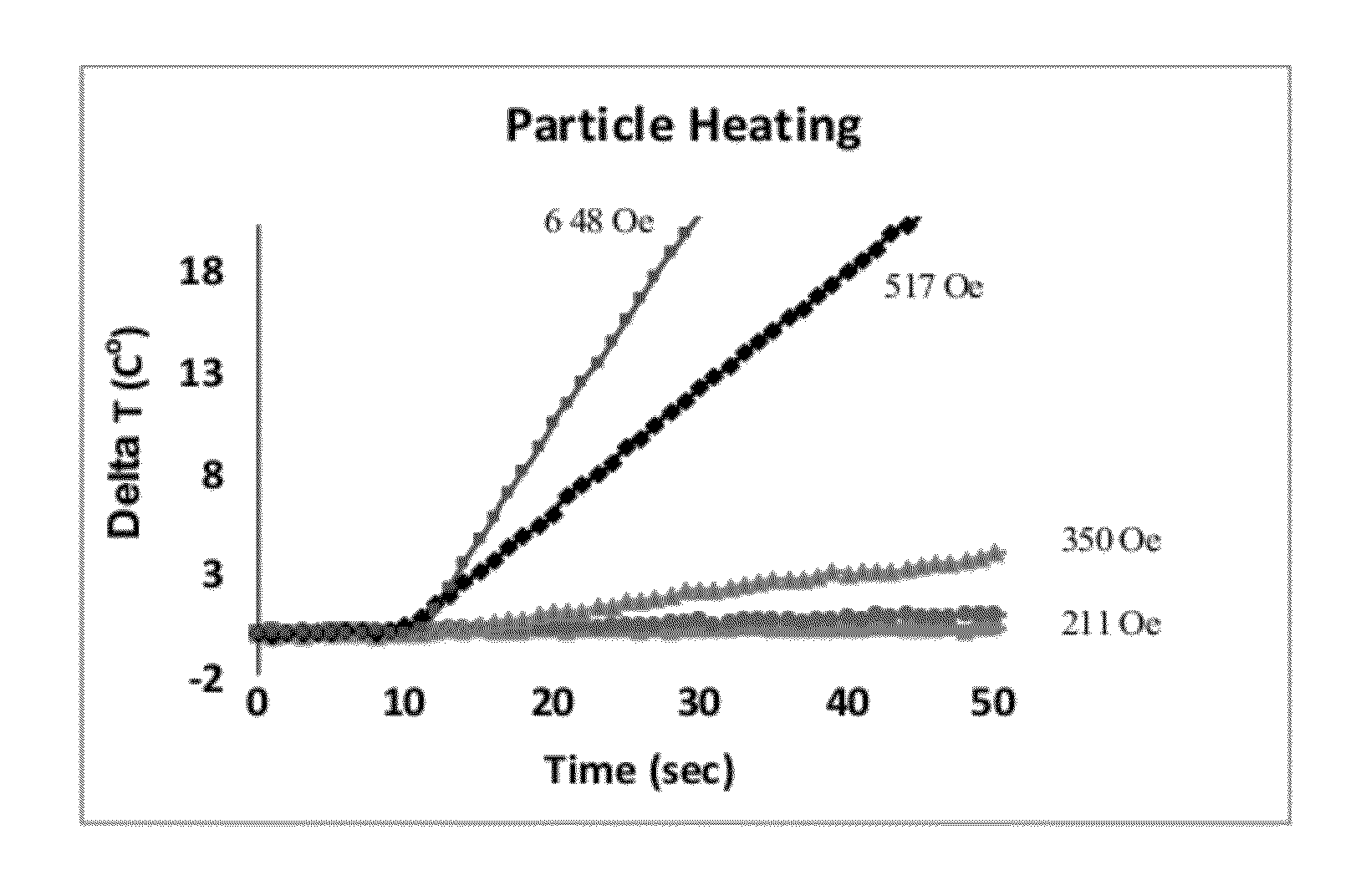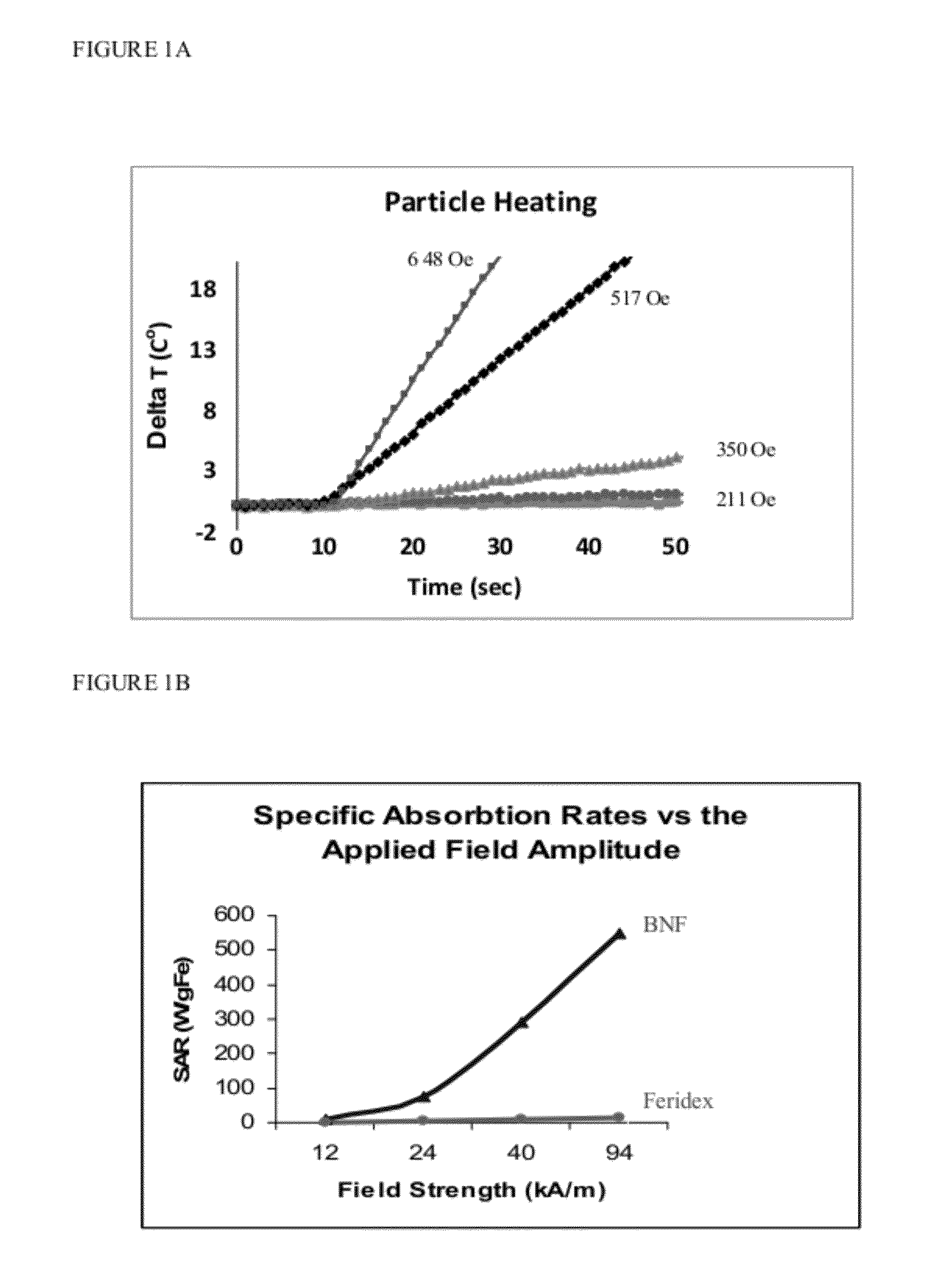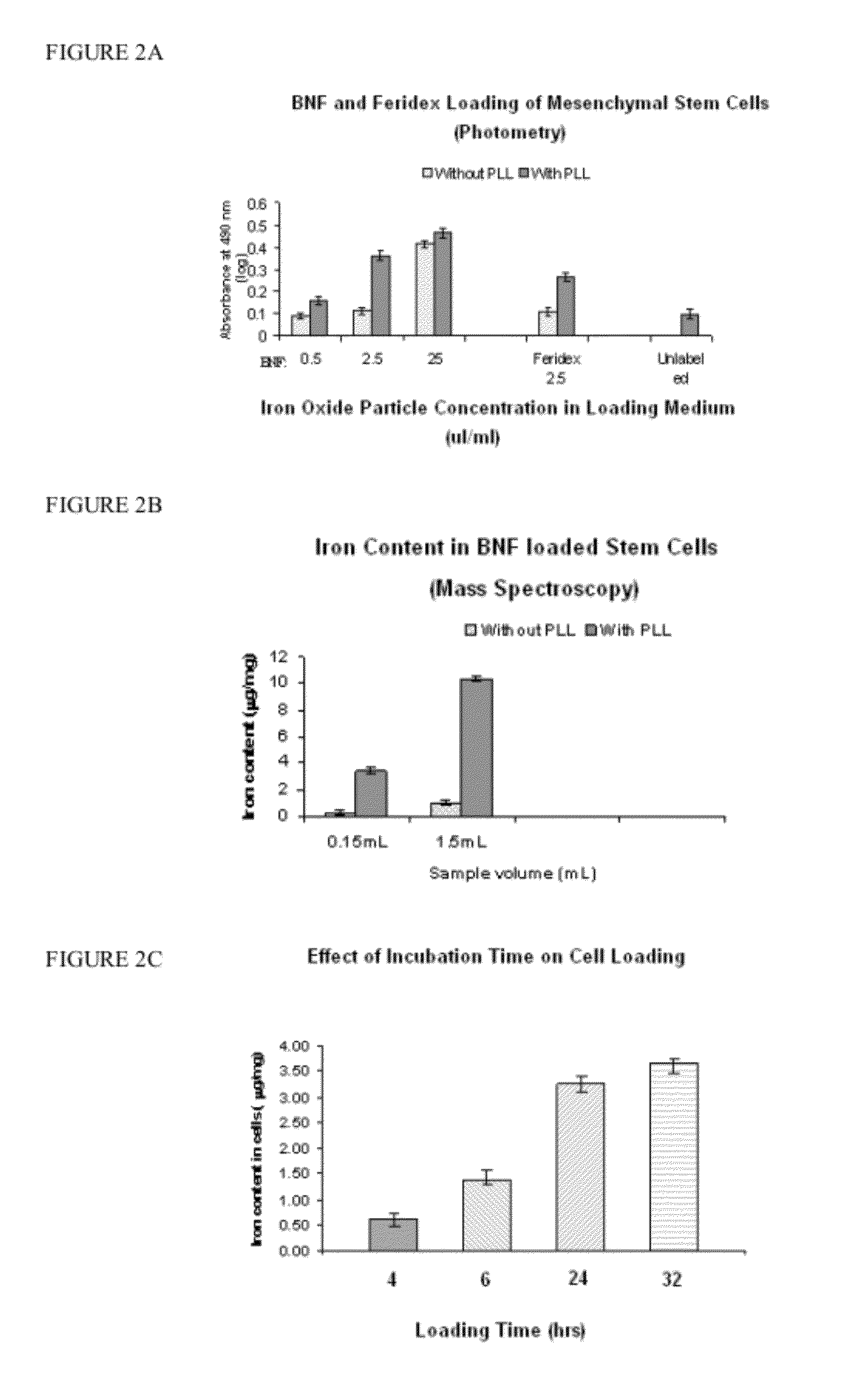Nanoparticle loaded stem cells and their use in MRI guided hyperthermia
a stem cell and nanoparticle technology, applied in the field of nanoparticle-loaded stem cells and their use in mri guided hyperthermia, can solve the problems that hyperthermia has not yet been established in the clinic, and achieve the effects of enhancing mr properties, and sufficient time for nlsc to localiz
- Summary
- Abstract
- Description
- Claims
- Application Information
AI Technical Summary
Benefits of technology
Problems solved by technology
Method used
Image
Examples
example 1
[0077]Particle heating and loading characteristics. BNF particles have unique characteristics including that they heat in an AMF. FIG. 1 demonstrates the heating rates of the BNF particles as a function of AMF amplitude. The magnetic field amplitude (peak-to-peak) in Oersteds is a measure of power of the magnetic field. Higher power (higher field amplitude and more intense magnetic flux density) extracts more heat from the particles.
[0078]To test the hypothesis that stem cells can be efficiently loaded with bi-functional BNF particles for imaging and hyperthermia, we examined loading characteristics and optimized loading conditions for mouse mesenchymal stem cells with BNF-particles (FIG. 2). According to ICP-mass spectrometry results (FIG. 2B), iron cell load varied from 0.6 to 1.6 pg / cell after overnight cells loading with BNF particles (2.5 μl / ml concentration in growth media). Loading of MSC with Feridex resulted in iron concentrations of 1-5 pg iron per cell. Iron content per c...
example 2
[0079]Cell survival, proliferation, differentiation. The effect of loading with the BNF particles on NLSC survival and growth was examined by using the Trypan Blue exclusion method which demonstrates cell viability. Viable cells were calculated after overnight cell loading with the BNF particles. Cells were re-suspended in the complete growth medium and plated in 24-well plates (in triplicates) for cells proliferation assay. Count of viable cells after 24, 48, 72, and 96 hours demonstrated that mouse mesenchymal stem cells can be efficiently loaded with iron-oxide BNF-particles without disturbing their viability and proliferation potential (FIG. 3A).
[0080]Standard differentiation assay also demonstrated that BNF-loaded cells can differentiate into adipocytes and osteocytes as unloaded control cells, so their differentiation potential also was not altered by BNF-labeling (data not shown). That suggests that BNF-loaded NLSC are capable to differentiate accordingly to microenvironment ...
example 3
[0081]Effect of AMF. To examine sensitivity of BNF-loaded NLSC to AMF, cells suspensions were exposed to 600, 800, and 1100 Gauss AMF for 20 minutes. In these experiments temperature (measured in a separate tube with the same loaded cells concentration) raised maximum to 44.3° C. (at 1100 G). BNF-loaded cells were sensitive to AMF in a dose-dependent manner. The fraction of surviving cells after exposure to AMF was extremely low in comparison to control unloaded cells: 9% after 600 G exposure, 5% after 800 G, and 0.4% after 1100 G AMF (FIG. 4A). Average count of unloaded cells exposed to AMF at the same conditions was 3.9×105 / well.
[0082]Two weeks after 800 G AMF exposure, surviving BNF-loaded NLSC formed colonies (data not shown), while control cells (unloaded or BNF-loaded unexposed to AMF) were confluent by day 4 and detached from the surface after one week. NLSC colony forming ability was significantly reduced if cells exposed to AMF were subsequently exposed to gamma-irradiation...
PUM
| Property | Measurement | Unit |
|---|---|---|
| time | aaaaa | aaaaa |
| particle diameters | aaaaa | aaaaa |
| particle diameters | aaaaa | aaaaa |
Abstract
Description
Claims
Application Information
 Login to View More
Login to View More - R&D
- Intellectual Property
- Life Sciences
- Materials
- Tech Scout
- Unparalleled Data Quality
- Higher Quality Content
- 60% Fewer Hallucinations
Browse by: Latest US Patents, China's latest patents, Technical Efficacy Thesaurus, Application Domain, Technology Topic, Popular Technical Reports.
© 2025 PatSnap. All rights reserved.Legal|Privacy policy|Modern Slavery Act Transparency Statement|Sitemap|About US| Contact US: help@patsnap.com



